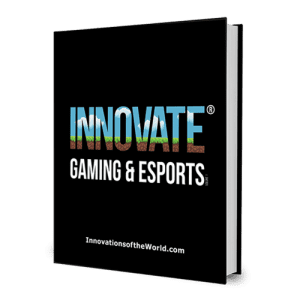As of the writing of this article in October 2021, the Twitch Influencer payment hack was making its way through the metaverse, enabling a comparison between the compensation that influencers and broadcast anchors enjoy, and the relative engagement they have with their
audiences and the business models that underpin their ecosystems – broadcast versus social.
As a mature-aged gamer, the significant difference in advertising spend between these 2 audiences – TV broadcast and gaming is an area of frustration given that I have been engaged in gaming for more than 20 years, and also work in advertising and feel that my identity in, and the engagement channel of ‘gaming’ has less understanding and priority.
The behaviour change needed with advertisers, their buyers and their strategists, is a translation to their language, the identity and the profile of audiences and participants in the gaming ecosystem. By using the same language, technology and frameworks that they are familiar with, the gaming eco-system will allow for scaling of revenues.
To start off with, Advertisers tend to rely on ‘personas’ to develop their communications plans when 1-to-1 audience profiling and targeting is not as easily accessible.
Just a Quick Note:
InnovationsOfTheWorld.com has partnered with Trade License Zone (TLZ) to support global innovators looking to expand internationally. Take advantage of the UAE’s Free Zones—enjoy streamlined setup, low corporate taxes, and a strategic gateway to the Middle East and beyond.
Get Your UAE Free Zone License Fast & Easy!What would be of further interest to advertisers and what makes gamers different to many other affinity groups (like music or fashion) is that their involvement tends to follow life stages that inherently assume differences in access to gaming – from technology (devices) to connectivity (5g vs fixed), and which might follow these types of character and player development that are dependent on their free time to invest in their characters:
1. Free-to-play players – more experienced mobile/console players who are limited in their ability or interest to invest in the loot to upgrade their characters, and whom
2. Glitterati – the new player that loves tinkering with the in-game virtual look, movement & accessories, doing so either with the free skins or paying a little to unlock new looks
3. Tick the Boxer – the freemium unboxer who follows the daily routines in order to slowly accumulate the credits needed over years to possibly unlock an asset
4. The completionist – the semi-veteran that is now going deep into titles, unlocking every single reward program and campaign achievement, because they can, and love to
5. Performance optimizer (future Esports) – the ‘veteran’ of gaming that has been through the previous 4 stages, and has ample time to invest in hardware and loot, and is now trying to reach the next level of their amateur efforts
6. Whales – time-poor but resource-rich players whom want that exhilarating respect, and have moments of brilliance
What each of these life stages can inform an advertiser, is a glimpse into that gamer’s life as a consumer of real-world products and services. By creating a common framework between how advertisers and the gaming ecosystem identify participants – starting with personas, but eventually connecting identity systems, both sides of the communications equation can more efficiently address their needs.
For advertisers – this means targeting the audiences that matter to them, by going deeper than the generic ‘gamer’ profile, and seeing participants as everyday consumers.
For the gaming eco-system – this means gaining an understanding of players outside of the boundaries of in-game economics, by connecting systems to broader media systems that can illustrate their profiles through 3rd party data, and powering deeper segmentation, and thus value to all stakeholders.
As gaming enters the mainstream, the ecosystem needs to empower advertisers with the ability to understand participants in the same language that they are used to. Partner with Annalect and Omnicom Media Group to evolve our practices to accelerate to that future.















